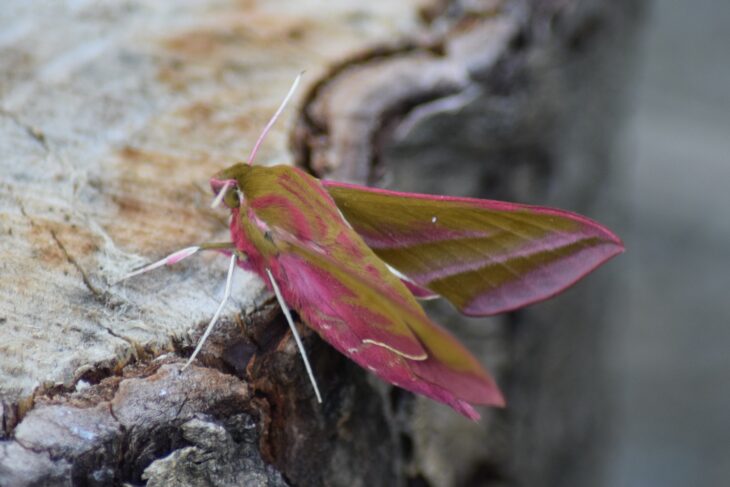Moths are often dismissed as brown and dull, but many species are actually bright and colourful. There are burnet moths with black and red wings, tiger moths with beautiful bold patterns, and hawk-moths that can be as large as your hand. Even the moths that are brown have intricate patterns and incredible camouflage. With around 2,500 species of moth in the UK, there’s an amazing amount of diversity to be discovered!
They can sometimes be hard to spot. There are a number of ways to make a safe moth trap and this is one that does not involve light. Many species of moths – just like butterflies – feed on nectar which is full of sugar, so they will be attracted to the sweet sticky cloths as they fly around at night. This won’t harm them, but will give you a chance to observe them while they feed!

Below you will find a moth spotter sheet to help you ID what you find. Make sure you take a close look at the beautiful colourings and markings of the moths! If you’re lucky, they might even stay around long enough for you to photograph or hold. If you take a photo on your mobile, you could upload it to an identification app to find out what it is – this will also record your sighting which helps data scientists! We recommend Seek by iNaturalist which is also great for young people.
What you will need:
- A bottle of cheap red wine
- Sugar (1kg)
- Saucepan
- Some lengths of cloth (1 metre each)
How to make your sugary moth trap:
You can download the activity guide below for instructions and pictures.
-
- Mix the wine and sugar together and gently heat until all the sugar has dissolved.
- Once cool – soak the cloths in the sugary liquid.
- Hang the cloths over some tree branches.
- Wait for a few hours after dark and check your trap!
- You could use a camera to take photos of what you see, and if you have an ID book or phone app, have a go at working out what species you find.
This video also shows you how to make nature potions in a jar and how to make moth brew (i.e. a sugary moth trap!).
Share your moth trap photos using #DiscoverLearnPlay
